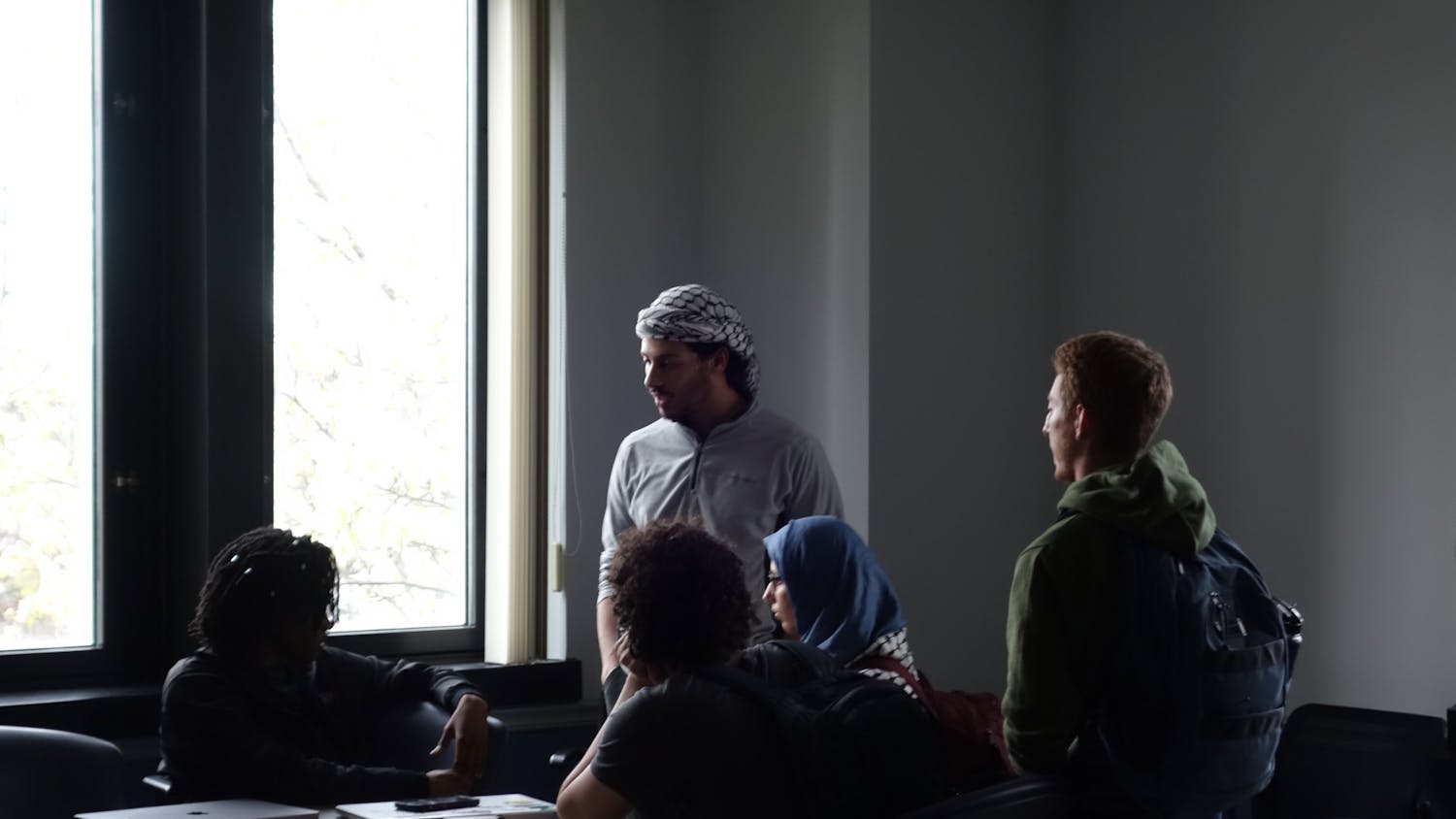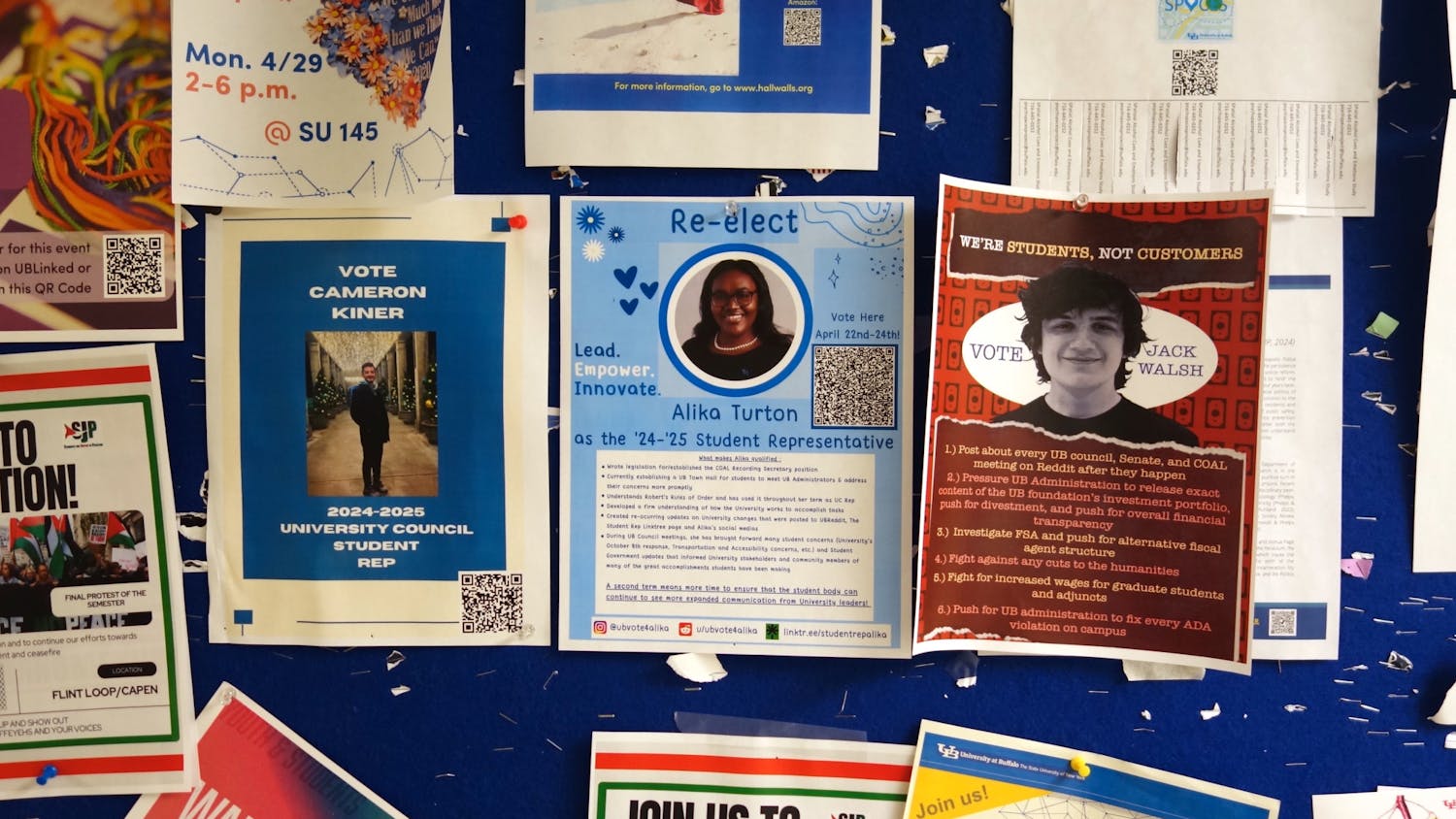Fifty people. One airplane.
It's been one year since Continental Connection Flight 3407 crashed into a Clarence home, stunning all of Western New York and putting the nation's aviation rules and regulations under federal scrutiny. Those nearest to the tragedy recall what it was like.
Courtney Agius, a senior dance major, was spending a typical Thursday evening in front of the television when the sound of sirens disrupted her show. She leaped out of bed to investigate.
From her brother Kyle's bedroom window, Agius watched as fire trucks flew down Roll Road, one right after another. As Agius tried to make out the trucks' destination, she looked up and saw a lit, pinkish sky in the distance with peculiar clouds looming overhead.
Later, Agius would find out that her uncle, Kevin Johnston, a 52-year-old father of three, had been on the plane.
The courageous firefighter
While Agius was looking at the scene from inside her house, Timothy Dickenson, a Clarence Center volunteer firefighter, was sitting in one of the blaring trucks heading to Long Street. Dickenson, who attended UB in 2001, was unwinding at home when he received the call.
Dickenson prayed he would encounter a small plane and only part of a home ablaze. But when their truck pulled up to the scene, he and the other responders realized the opposite was true.
'When we arrived at the house, that's when I saw the Continental tail wing and realized it was a large plane that had hit the house,' Dickenson said. 'My sister works as a flight attendant for Continental so my immediate thought was, ‘Where is my sister?' '
Luckily, Dickenson's sister was not on that Bombardier Dash 8 Q400 aircraft on that February night.
En route from Newark, New Jersey, Continental Connection Flight 3407 spun out of the sky during its final descent into the Buffalo Niagara International Airport, crashing into the two-story home of the Wielinski family, killing 49 people on the plane and Douglas Wielinski in his home. Six UB alumni were among the dead.
It was the worst aviation catastrophe ever recorded in Western New York history and the deadliest U.S. air accident in eight years.
The local reporter
Pete Gallivan, a reporter at WGRZ, was an anchor at the time of the Feb. 12, 2009 tragedy. He was sleeping when the station called around 12:30 a.m. Twenty-five minutes later, Gallivan was on set, starting a shift that would last until three o'clock the next day.
According to Gallivan, who was fueled by coffee combined with adrenaline, those 15 hours soared by.
'It's not even that you're expected to be there – you want to be there because this is why you got into the business in the first place,' Gallivan said. 'It's one of those moments you really galvanize in your mind why you are there and what you are doing ... you're giving people vital information that they'll be depending on.'
Gallivan said that he threw the cardinal rule of reporting out the window while covering Flight 3407 because it was impossible not to feel sympathy.
'In this situation you still need to stay focused, but you also have to remain compassionate,' Gallivan said. 'You're trying to convey urgency and you're also trying to be a real person and connect to the people. And if you're not going to show any emotion whatsoever, you're doing the viewer a disservice ... because a news reader is not what people need in that situation, they need an advocate – they need someone who is in it with them.'
Gallivan talked with the victims' families during the final National Transportation Safety Board hearing, which was held on Feb. 2, 355 days after the crash. The report cited pilot error, not icing conditions as originally proposed, as the main cause of last year's crash.
'It was almost a year [later]. And listening to the play-by-play of what went wrong and listening to the family members – they're still grieving, but now it's also frustration that not only has nothing changed since the accident, but the recommendations made a decade before were never addressed,' Gallivan said. 'So you've got the whole dynamic of the grieving process coming on the one-year anniversary of the crash, but you've also got the [notion] that they don't want their loved ones' deaths to be in vain.'
The grieving parents
When Marilyn and John Kausner of Clarence Center bought their youngest daughter Elly, 24, a Continental plane ticket, they assumed she would be flying on Continental Airlines. But after Elly, a second year law student at the Florida Coastal School of Law, was lost in last year's crash, it was found that Continental did not operate her plane. Instead, Colgan Air, a smaller regional airline, did.
'Flying Cheap,' a PBS FRONTLINE documentary, aired Tuesday night and zeroed in on the regional airline industry, which now accounts for more than half of America's commercial flights. The program portrayed the growing industry, with Colgan Air as its poster airline, as one that is out to make a profit, even if it means ignoring safety procedures.
Capt. Marvin D. Renslow, 47, Flight 3407's pilot, was found by the NTSB to have had just over 600 hours of flying time when he was hired by Colgan Air – less than half of the required training time for most of the major airlines.
Renslow's first officer, Rebecca Shaw, 24, was in no condition to fly after commuting from Seattle, Washington the night before and sleeping in crew lounges until the flight's takeoff. The cockpit's voice recorder later revealed Shaw saying that she wanted to call in sick that day, but couldn't afford the expense of a hotel room.
'What we found out now is that [Colgan Air] didn't really have two qualified people in the cockpit,' Marilyn said. 'And our daughter became the collateral damage of their financial decision, so we're angry and pretty determined to see the laws changed.'
The Kausners had spent that February night vacationing in the Florida Keys and watching the movie The Family That Preys when the song 'I Hope you Dance' by Lee Ann Womack issued from the speakers.
'I was listening to that song and I thought, ‘Wow, that's just like Elly,' John said.
Elly was a chance-taker, according to her parents. She had been skydiving more than once, traveled frequently, and swam with dolphins just a week before her passing.
'[When she returned] from swimming with the dolphins, Elly said to me, ‘Mom, I've crossed another thing off my bucket list,' said Marilyn. 'And I thought to myself, ‘This girl is too young to have a bucket list.'
The widowed professor
Roger Des Forges, a professor in UB's Department of History, sat in the airport one year ago waiting for his wife, Alison, to arrive.
Des Forges kept his eyes transfixed on the flight monitor, which read that Flight 3407 was on time.
Next, it said the flight was experiencing delays.
Then it dropped off the screen altogether.
Airport personnel gathered a number of people into a room to announce that the plane had crashed. Des Forges then found a security officer and introduced himself.
'[The officer] said, ‘It's very, very bad,' Des Forges said. 'I asked him, ‘Does that mean there are no survivors?' And he just said, ‘It's very, very bad.'
Alison Des Forges, 66, was also a professor in the Department of History and was returning from a trip to London that Thursday night with a member of British Parliament. They spoke about the legal system in Rwanda, an issue she had devoted her life to.
With the passing of his wife, Des Forges has focused his energy over the past year on completing the humanitarian work Alison started.
A celebrated human rights advocate and historian, Des Forges will always remember Alison as the woman he fell in love with as a senior in high school.
'We went to two different colleges and married as soon as we graduated. Then we went to graduate school together – she studied Africa and I studied China,' said Des Forges. 'She lived a very full and busy life and devoted herself to [me]; our two children; the city that she loved – Buffalo, New York; and to Rwanda and human rights, in general.'
The supervisor of a devastated town
Scott Bylewski, the Clarence town supervisor, was relaxing at home on his couch when he heard the crash that would change his community forever – but to him it just sounded like a metal door slamming.
When the first responders and disaster coordinator informed him that it had, in fact, been a plane crash, Bylewski found himself transforming from his role of husband and father to presiding over a community of nearly 29,000 that had been struck with tragedy.
Utilizing his UB business and law degrees, Bylewski immediately went into crisis control. He declared a state of emergency in Clarence, making sure the right people were in place and the right facts assembled.
Eleven days after the accident, Long Street was reopened and Clarence Center returned to its everyday operations. But its residents were not left unchanged, according to Bylewski.
'We've always been a close-knit community, but [the disaster] helped bring us closer,' Bylewski said. 'When it's all said and done, we will keep moving forward together and become a stronger community.'
One year later, the crash site is now occupied by two snowy fields. The Wielinski family plans to put up a small, unobtrusive memorial where their house once stood and Bylewski says the Town of Clarence will eventually house a bigger version to memorialize the event that will forever be cemented in his town's foundation.
The difference maker
Kyle Agius, a sophomore business major, began selling red bracelets one month after his uncle, Kevin Johnston, died in the crash. The bracelets read, 'In Memory of Flight 3407.' Almost a year and over 4,000 bracelets later, he has raised $5,500, which he plans to donate to Clarence's Flight 3407 memorial.
Those interested in purchasing the $2 bracelets can visit Kyle Agius's Facebook group, 'Flight 3407 Bracelets.'
His uncle Kevin has been gone a year now, but Agius believes he and the 49 others will be part of Clarence forever.
E-mail: features@ubspectrum.com





